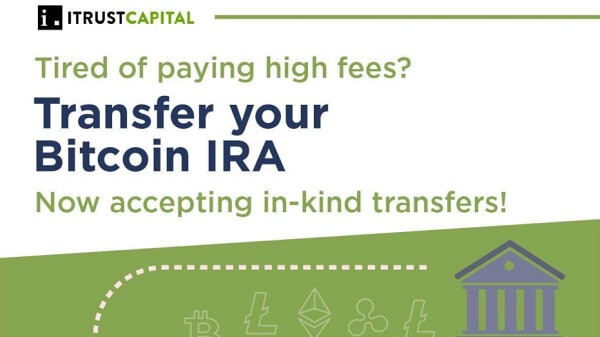
Bitcoin has hit new all-time highs as President-elect Donald Trump secured victory in the 2024 United States presidential election.
Set to return to the White House after departing in January 2021, Trump now appears to be bringing a pro-crypto stance with him. His campaign made several pledges in support of the cryptocurrency sector, marking a difference with the previous administration.
As Trump prepares to resume office, Cointelegraph looks back on how the cryptocurrency landscape appeared during his last term. The industry has seen major shifts since then — half of the top 10 coins from his previous term have fallen out of the rankings.
Here’s a look at how the top 10 cryptocurrencies from Trump’s last presidency are faring today.
Bitcoin
Bitcoin price Jan. 20, 2021: $35,302.18
Bitcoin price Nov. 11, 2024: $82,379.60
Since Trump’s last White House stint, Bitcoin has gone through more twists than the president-elect’s path to election victory. First, there was an all-time high of about $67,000 in November 2021. Then came FTX — the seismic crash of November 2022 that took Bitcoin down to $17,000 and left everyone wondering if the ride was over
Fast forward through a bear market for both Bitcoin (BTC) and the global economy, with BTC dragging its feet through most of it.
Still, like any good comeback story, Bitcoin rebounded in 2024 as it became accessible to institutions on the US stock market through those shiny new spot exchange-traded funds (ETFs).
With analysts’ eyes glued to the $100,000 mark as Trump’s victory signals the beginning of the end for crypto’s supervillain, Gary Gensler at the Securities and Exchange Commission (SEC), the asset has already smashed past the $82,000 mark.
In addition, Bitcoin now hosts digital trinkets like Ordinals (an iteration of non-fungible tokens) and some of the internet’s favorite memecoins through Runes. So while Bitcoin remains the gold-standard crypto in the age of Trump 2.0, it’s also found some new ways to keep itself interesting along the way.
From undisputed king to layer-2 lab rat
Ether price Jan. 20, 2021: $1,361.05
Ether price Nov. 11, 2024: $3,175.47
Ether (ETH) was the undisputed monarch of smart contracts, reigning over a kingdom of decentralized applications. Now the crown isn’t quite as secure and the network has some serious competition.
Solana, the fast, flashy upstart is now ranked fourth by market cap, taking the lead among the “Ethereum killer” blockchains.
Ethereum, however, has chosen a different route to stay relevant. Rather than battling it out for raw speed, it opted to expand with layer-2 solutions. This has helped ease the infamous congestion and sky-high fees, but there’s a cost.
These layer-2 networks have drained liquidity and fragmented Ethereum’s ecosystem, transforming its once-unified realm into a sprawling collection of mini-kingdoms.
In its quest to evolve, Ethereum also went green with The Merge in September 2022, swapping out proof-of-work for a more eco-friendly proof-of-stake consensus mechanism.
The upgrade slashed Ethereum’s energy use by 99% and set the stage for future scalability tweaks like sharding. The crypto world applauded, and it was a big step for Ethereum’s sustainability, though it didn’t come with the explosive price surge some investors anticipated.
And while Bitcoin has been busy breaking records, Ethereum was left in the dust despite listing spot ETFs of its own. For now, Ethereum is still hanging on to its No. 2 spot, but simply being a legacy brand might not be enough to keep the crown.
Ignoring the haters
In the wake of the Terra-Luna collapse—an implosion that rattled faith in algorithmic stablecoins everywhere—Tether’s USDT has not only weathered the storm but emerged stronger than ever. Now the third-largest cryptocurrency by market cap, USDT’s valuation has ballooned to about $120 billion.
Despite raking in a net profit of $2.5 billion in the third quarter, bringing 2024’s total to $7.7 billion, the company still hasn’t undergone a full, comprehensive audit. Instead, Tether provides regular attestations.
Related: Tether posts $2.5B in Q3 profits, with 2024 earnings reaching $7.7B
So, what’s driving this profit parade? US Treasury Bills, mostly. Tether’s reserves now claim a comfortable $6 billion buffer, with $102.5 billion in Treasury Bills, making Uncle Sam’s debt Tether’s golden goose.
But with great profits come great questions. Without a formal audit, many are left wondering if Tether’s vaults are as solid as they claim. Tether may be the titan, but trust is still the currency that matters most.
From contender to rebuilder
Polkadot price Jan. 20, 2021: $15.94
Polkadot price Nov. 11, 2024: $5.13
Back in Trump’s last term, Polkadot (DOT) was riding high. With a market value of $17 per token and the fourth spot in the crypto rankings, it looked poised to become the bridge across blockchain ecosystems, promising a future of seamless crosschain communication. In 2024, though, Polkadot’s shine has dulled — a $4.10 price tag and a drop to the 21st spot by market cap.
Polkadot is no longer a top 10 crypto. Source: Logan Saether
Still, Polkadot is not waving a white flag. This year, it rolled out Agile Coretime, a new system letting developers buy processing time directly on its core layer. It’s part of the Polkadot 2.0 upgrade, a major pivot from the old auction model.
With the introduction of “inscriptions” — a playful nod to Bitcoin’s Ordinals — Polkadot smashed transaction records in December 2023, clocking in over 17 million transactions.
Still, Polkadot’s got a tough crowd to impress. Ethereum and Solana have cemented themselves as powerhouses in decentralized finance (DeFi), with other advanced chains nipping at their heels.
Clear skies ahead for XRP
XRP price Jan. 20, 2021: $0.285924
XRP price Nov. 11, 2024: $0.581592
XRP held the fifth spot in crypto rankings in January 2021. It has dropped a bit to seventh, but growth has been mostly positive. Its price has jumped from $0.2958 to $0.5355, and its market cap has more than doubled to a cool $30.5 billion. Not bad for a cryptocurrency that’s been through a legal saga intense enough for a courtroom drama series.
Ripple Labs, the San Francisco company that developed technology around the XRP Ledger and advocates for its use in cross-border transactions, scored a partial win in court in 2023.
After years of back-and-forth, the judge ruled that while some private sales of XRP did cross into unregistered securities territory, XRP itself doesn’t qualify as a security. It’s a half-victory for Ripple and a full game-changer for the XRP ecosystem, which has long operated under a regulatory cloud.
Related: SEC’s Ripple appeal doesn’t challenge XRP non-security status
Now, with legal uncertainty clearing up, XRP is even being discussed as a candidate for an ETF — alongside up-and-comers like Solana. An XRP ETF could open doors to a more mainstream audience, sparking fresh excitement among investors who’ve weathered the ups and downs. So, while XRP might have slipped a couple of notches in the rankings, its resilience, steady growth and newfound legal clarity hint at the start of an unlikely comeback.
The ’90s band of crypto fighting for a comeback
ADA price Jan. 20, 2021: $0.358738
ADA price Nov. 11, 2024: $0.592937
Back in the last election cycle, Cardano (ADA) was cruising comfortably in the top 10, with a reputation as an “Ethereum killer” and its roots tracing back to an Ethereum co-founder. Today, Cardano is a bit like that band from the ’90s that’s still hanging around the charts, occasionally slipping in and out of the top 10.
Critics love to call it a “ghost chain,” claiming there’s not much building going on and even fewer users to show up. And the numbers do raise an eyebrow: Cardano’s core developer and active user count have dropped.
Cardano’s code commits and core developer count drops. Source: Token Terminal
Yet Cardano isn’t sitting back and letting the doubters have their say. The Chang hard fork, completed in September 2024, ushered in fresh features and scalability upgrades, signaling it’s still got some tricks up its sleeve. The network has also entered the Voltaire phase, aiming for a decentralized governance model where users can participate directly in decision-making.
Litecoin and Bitcoin Cash: The original rebels fighting for relevance
Litecoin price Jan. 20, 2021: $149.80
Litecoin price Nov. 11, 2024: $77.38
Bitcoin Cash price Jan. 20, 2021: $501.72
Bitcoin Cash price Nov. 11, 2021: $438.73
In the early days of crypto, Litecoin (LTC) and Bitcoin Cash (BCH) were the champions of “spendable” cryptocurrency — two coins vying to be digital cash for everyday use.
Litecoin, the “lite” version of Bitcoin, offered faster transactions and lower fees, while Bitcoin Cash split off from Bitcoin with a bold promise: to fulfill the original peer-to-peer cash vision of Satoshi Nakamoto by boosting block sizes and reducing fees.
Both coins gained loyal followings and even some merchants, but their paths feel more like nostalgia trips than the revolution they aimed to spark.
In a world where Bitcoin has solidified itself as “digital gold” and newer cryptos offer advanced features like smart contracts and decentralized applications, Litecoin and Bitcoin Cash struggle to stand out.
Countries banning crypto payments and regulatory red tape haven’t helped, either. While some small pockets of adoption persist — think cafes in Townsville, Ljubljana, and parts of Buenos Aires — the broad use case for everyday transactions hasn’t materialized.
Litecoin and Bitcoin Cash have both dropped out of the top 10 cryptocurrencies by market cap, sitting at the 25th and 19th spots respectively.
Behind the scenes of DeFi
LINK price Jan. 20, 2021: $20.51
LINK price Nov. 11, 2024: $13.99
Chainlink (LINK) isn’t here to be “digital cash” or a “smart contract superstar,” but rather the backbone of the crypto world, quietly holding the DeFi universe together.
While other cryptocurrencies chase headlines and retail hype, Chainlink is hard at work feeding price data, weather forecasts and other real-world information to blockchains that need them. Since Trump’s last term, Chainlink’s role as the go-to oracle service has only solidified, making it the ultimate backstage hero of decentralized finance.
The recent rollout of Chainlink 2.0 added even more muscle to its oracle network. This upgrade introduced decentralized oracle networks, enabling dynamic non-fungible tokens, automated blockchain functions and all kinds of new DeFi magic.
With staking finally available, LINK holders can now secure the network and earn rewards — a long-awaited perk that gives a boost to this data-driven ecosystem. Chainlink is now better equipped for complex tasks, proving that it’s not just reliable but versatile too.
LINK’s price hasn’t enjoyed the same steady rise as its reputation. The token has been buffeted by volatility and competition. New oracle providers have entered the scene, and some DeFi projects are building their own oracles.
Not so stellar
XLM price Jan. 20, 2021: $0.291680
XLM price Nov. 11, 2024: $0.109166
Launched by Ripple co-founder Jed McCaleb in 2014, Stellar set out to offer quick, low-cost international transactions, connecting everyone from financial institutions to the unbanked.
Since Trump’s last term, Stellar has made strides in the central bank digital currency (CBDC) arena, particularly with its pilot project in Ukraine to test a digital version of the hryvnia.
Magazine: Real life yield farming: How tokenization is transforming lives in Africa
But Stellar’s journey hasn’t been all, well, stellar. The competition in cross-border payments has only ramped up. Governments exploring CBDCs often look toward centralized solutions or established platforms like Ethereum.
Stellar’s XLM token has suffered as the market increasingly tilts toward DeFi-focused chains with high-profile use cases. It’s dropped from the 10th spot to the 35th spot, as of Nov. 8, 2024.








 Bitcoin
Bitcoin  Ethereum
Ethereum  Tether
Tether  XRP
XRP  USDC
USDC  Wrapped SOL
Wrapped SOL  TRON
TRON  Lido Staked Ether
Lido Staked Ether  Dogecoin
Dogecoin
Be the first to comment